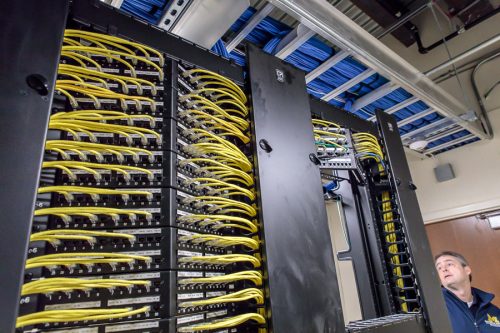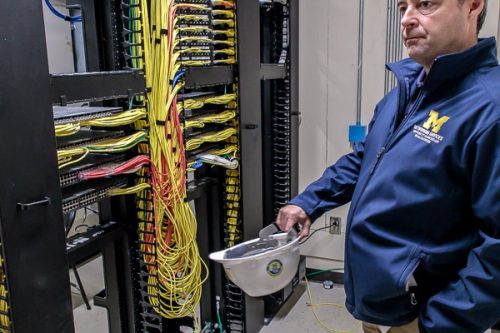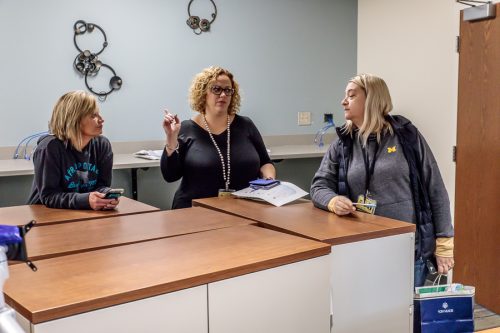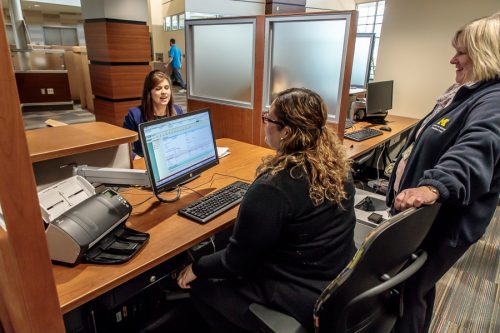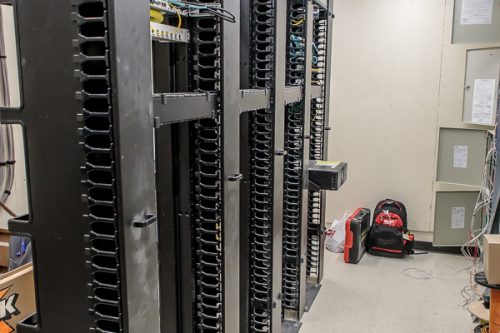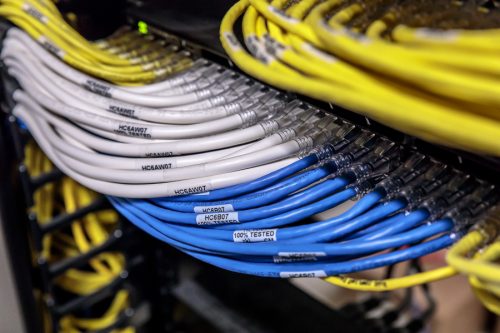The first thing you notice when entering West Ann Arbor-Parkland Plaza health center might be the welcome desk, floor-to-ceiling windows, or charming artwork. It probably isn’t the WiFi access points, label printers, or network cables.
Randy Smith, a network architect with Health Information Technology & Services (HITS), knows how integral that technology is to the health center’s day-to-day operations. For more than two years, he worked with architects, engineers, telecommunications, and electricians to ensure the 75,000-square-foot health center met the needs of its new occupants.
Brain of the building
“Designing and building the infrastructure is something most people don’t think about,” said Smith, who holds a Registered Communications Distribution Designer (RCDD) certification. “There are so many detailed actions happening behind the scenes to ensure every piece of technology works—whether it be a phone, computer, fire alarm, or the security cameras.”
“As more devices become IP-based, we want to be ready.”
During a recent tour, Smith shows off a communication closet he calls the “brain of the building.” While the data racks may look bare now, Smith said his involvement during the design phase ensures the building is capable of supporting future technology.
“Because space is at a premium, I usually have to negotiate for it. It’s easy for a design team to assume the communication closet can be located in a small, back corner of the building,” Smith said. “My goal is to design a communication closet that will support the building for the next 20–25 years. That means it needs the space to grow. As more devices become IP-based, we want to be ready.”
Home to 20 adult and pediatric primary and specialty care services, Parkland Plaza opened on November 27. The facility supports Michigan Medicine’s strategy to increase patient access to U-M providers and grow its clinical workforce.
Early involvement
To ensure new and existing health care facilities are built or renovated with technology in mind, HITS staff get involved early in the process, and many others assist at some point during the effort. About 50 HITS staff supported the Parkland Plaza project.
Cindy Belcher, desktop support supervisor with HITS, said her team installed more than 400 computers and 175 printers at Parkland Plaza. The team meets with Ambulatory Care activation team and clinicians to understand their specific workflow and make recommendations for integrating IT.
“If a care team will be rolling in equipment like a fetal heart rate monitor, we need to ensure there are enough jacks in the room,” Belcher said. “We’ve learned to recommend high-end machines for speciality software, and in cases where groups share team rooms, we can also predict and remedy any software compatibility issues.”
On-time delivery
“Working directly with HITS staff is key to making sure we have the right data available in key places.”
Belcher acknowledged construction delays can sometimes impact her team, but they never want to be the reason a building doesn’t open on time.
“When things get delayed, it just means we have less time to get in and do our jobs,” Belcher said. “When we gained access to Parkland Plaza in September, it was still an active construction site. Our team was wearing hard hats and safety glasses as we unboxed equipment and put computers, scanners, printers, and monitors in place.”
The effort of the HITS staff is recognized by others involved in opening Parkland Plaza.
“Working directly with HITS staff is key to making sure we have the right data available in key places,” said Yvette Salamy, senior project manager with ambulatory care. “Everyone has been receptive and accommodating each step of the way.”
See more photos and read the article in Michigan Medicine Headlines.

